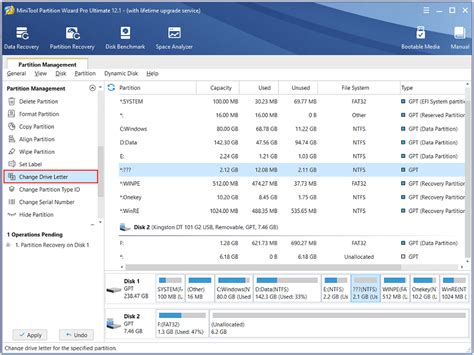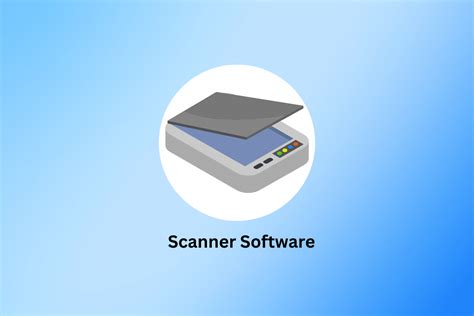Aperture
Author: l | 2025-04-24

Aperture free download - Apple Aperture, Aperture Update, Aperture Presets, and many more programs. Unfortunately, there is no direct download for the Mac version of Aperture. To Discontinued Aperture Plug-in FAQs Maperture Pro Aperture to Archive Aperture to Filemaker Aperture to Picasa Web Albums GalleryExport for Aperture; ber Plugins.com

What Is Aperture? Understanding Aperture
Looks like no one’s replied in a while. To start the conversation again, simply ask a new question. Updated to Yosemite, I have Aperture 2.1.4 which worked fine on Mavericks. It is now saying I can't use it on Yosemite. Any help? Do I need to buy new version of Aperture just to make it work on Yosemite? Posted on Oct 27, 2014 2:23 PM Posted on Oct 27, 2014 2:40 PM Yes. Only Aperture 3.6 is compatible with Yosemite. Upgrading from aperture 2 to Aperture 3 is a paid upgrade. You can buy the upgrade from the AppStore.You have been lucky, that Aperture 2.1.4 worked well for you. There have been compatibility issues with Aperture 2.1.4 since MacOS X 10.7 Lion came out. The last compatibility update Aperture 2.1.4 was for MacOS X 10.6.8. Snow leopard is the last MacOS X version, that officially supports Aperture 2 well. Yosemite is the fourth MacOS X upgrade, since Aperture 2 has been replaced by Aperture 3 in February 2010.Be sure to keep a backup of the Aperture library, before you upgrade. The upgrade will rebuild the library in a new format. See the Release Notes, i.e. the last paragraph, "A Note on Upgrading" Aperture 3.6 Release notes Updated to Yosemite, I have Aperture 2.1.4 which worked fine on Mavericks. It is now saying I can't use it on Yosemite. Any help?. Aperture free download - Apple Aperture, Aperture Update, Aperture Presets, and many more programs. Unfortunately, there is no direct download for the Mac version of Aperture. To Discontinued Aperture Plug-in FAQs Maperture Pro Aperture to Archive Aperture to Filemaker Aperture to Picasa Web Albums GalleryExport for Aperture; ber Plugins.com So, for a lens with an aperture of 2.8 – 22, the maximum aperture is 2.8, and the minimum aperture is 22. The larger the aperture hole, the smaller the number; the smaller the Aperture free download - Apple Aperture, Aperture Update, Aperture Presets, and many more programs. Unfortunately, there is no direct download for the Mac version of Aperture. To download the product, proceed to the App Store via the link below. Download from itunes.apple.com. Related PC software. Big Aperture. Viewers Editors. Aperture Birds. Duplicate Annihilator - Aperture Edition. Detects duplicates in Aperture. Fully compatible with Aperture 3.4.2 Duplicate Annihilator - Aperture Edition. Detects duplicates in Aperture. Fully compatible with Aperture 3.4.2 Duplicate Annihilator - Aperture Edition. Detects duplicates in Aperture. Fully compatible with Aperture 3.4.2 Aperture—the hole within a lens that allows light to travel through to the camera body’s internal sensor—is one of the most influential factors in determining the look of a photograph. It’s crucial for photographers to understand the ins and outs of aperture as it heavily impacts both depth of field as well as exposure. This animation from Apalapse is a great start:One of the easiest ways to understand just how aperture works is to take a close look at the human eye. Using this analogy, the glass element of a lens is to the camera what the cornea is to the eye. That is, the surface gathers light and bends it inwards. From there, the irises expand and contract to control just how much of that light travels through the pupil to reach the retina (and subsequently, the brain). A camera’s aperture works exactly the same way. Photographers have the ability to open or close up a camera’s diaphragm, which controls how large or small an aperture will be. The amount of light then travels through the aperture and hits the light sensitive film or sensor housed inside of the camera, which creates an image.F-stops are the units used to express a camera’s aperture. It describes just how open or closed the aperture itself is. The smaller an f-stop, the wider its corresponding aperture will be.As was mentioned earlier, aperture plays a significant role in the exposure of an image. This makes sense, as larger apertures let more light into the camera (and vice versa). It’s important to keep your ISO and shutter speed balanced with your aperture to avoid over exposing or under exposing photographs.Aperture also directly impacts an image’s depth of field. Smaller apertures such as f/16 will keep objects near and far perfectly in focus. However, bringing the aperture down to something like f/2 will create a very specific line of focus, throwing everything that falls outside of it into an indistinguishable blur.Every lens has a limit on how large or small the f-stops can be. It’s almost always indicated on the lens itself. Prime lenses with fixed focal lengths maintain the same aperture range at all times. However, the available aperture of a zoom lens changes depending on the focal length in use. Often times, the higher a lens’s focal length, the less versatility it will have in its aperture range.Lastly, there are two camera shootingComments
Looks like no one’s replied in a while. To start the conversation again, simply ask a new question. Updated to Yosemite, I have Aperture 2.1.4 which worked fine on Mavericks. It is now saying I can't use it on Yosemite. Any help? Do I need to buy new version of Aperture just to make it work on Yosemite? Posted on Oct 27, 2014 2:23 PM Posted on Oct 27, 2014 2:40 PM Yes. Only Aperture 3.6 is compatible with Yosemite. Upgrading from aperture 2 to Aperture 3 is a paid upgrade. You can buy the upgrade from the AppStore.You have been lucky, that Aperture 2.1.4 worked well for you. There have been compatibility issues with Aperture 2.1.4 since MacOS X 10.7 Lion came out. The last compatibility update Aperture 2.1.4 was for MacOS X 10.6.8. Snow leopard is the last MacOS X version, that officially supports Aperture 2 well. Yosemite is the fourth MacOS X upgrade, since Aperture 2 has been replaced by Aperture 3 in February 2010.Be sure to keep a backup of the Aperture library, before you upgrade. The upgrade will rebuild the library in a new format. See the Release Notes, i.e. the last paragraph, "A Note on Upgrading" Aperture 3.6 Release notes Updated to Yosemite, I have Aperture 2.1.4 which worked fine on Mavericks. It is now saying I can't use it on Yosemite. Any help?
2025-04-24Aperture—the hole within a lens that allows light to travel through to the camera body’s internal sensor—is one of the most influential factors in determining the look of a photograph. It’s crucial for photographers to understand the ins and outs of aperture as it heavily impacts both depth of field as well as exposure. This animation from Apalapse is a great start:One of the easiest ways to understand just how aperture works is to take a close look at the human eye. Using this analogy, the glass element of a lens is to the camera what the cornea is to the eye. That is, the surface gathers light and bends it inwards. From there, the irises expand and contract to control just how much of that light travels through the pupil to reach the retina (and subsequently, the brain). A camera’s aperture works exactly the same way. Photographers have the ability to open or close up a camera’s diaphragm, which controls how large or small an aperture will be. The amount of light then travels through the aperture and hits the light sensitive film or sensor housed inside of the camera, which creates an image.F-stops are the units used to express a camera’s aperture. It describes just how open or closed the aperture itself is. The smaller an f-stop, the wider its corresponding aperture will be.As was mentioned earlier, aperture plays a significant role in the exposure of an image. This makes sense, as larger apertures let more light into the camera (and vice versa). It’s important to keep your ISO and shutter speed balanced with your aperture to avoid over exposing or under exposing photographs.Aperture also directly impacts an image’s depth of field. Smaller apertures such as f/16 will keep objects near and far perfectly in focus. However, bringing the aperture down to something like f/2 will create a very specific line of focus, throwing everything that falls outside of it into an indistinguishable blur.Every lens has a limit on how large or small the f-stops can be. It’s almost always indicated on the lens itself. Prime lenses with fixed focal lengths maintain the same aperture range at all times. However, the available aperture of a zoom lens changes depending on the focal length in use. Often times, the higher a lens’s focal length, the less versatility it will have in its aperture range.Lastly, there are two camera shooting
2025-04-06Looks like no one’s replied in a while. To start the conversation again, simply ask a new question. I just upgraded to Yosemite from 10.6.8 and my Aperture will not work. Can I upgrade without first downgrading to Mavericks? MacBook Pro, OS X Yosemite (10.10) Posted on Dec 2, 2014 2:46 PM Posted on Dec 2, 2014 2:51 PM Do you have a version of Aperture 3 or an older version? You need to update to Aperture 3.6. If you already have Aperture 3, the update should be free. Otherwise you have to buy an upgrade.Did you originally buy Aperture 3 as a boxed retail version or downloaded it from the Apple Store and bought a serial number? Then your current Aperture version has not yet been associated with your Apple ID. This association would have happened automatically with the update to Aperture 3.5.1 on Mavericks, but you probably missed that window of opportunity.Now you can only buy Aperture 3.6, the Yosemity compatible version. Contact the AppStore Support and request a redeem code, to be able to buy the update for free. You will need to provide a proof op purchase of Aperture.Use this link: Upgrading Aperture with Yosemite
2025-04-16